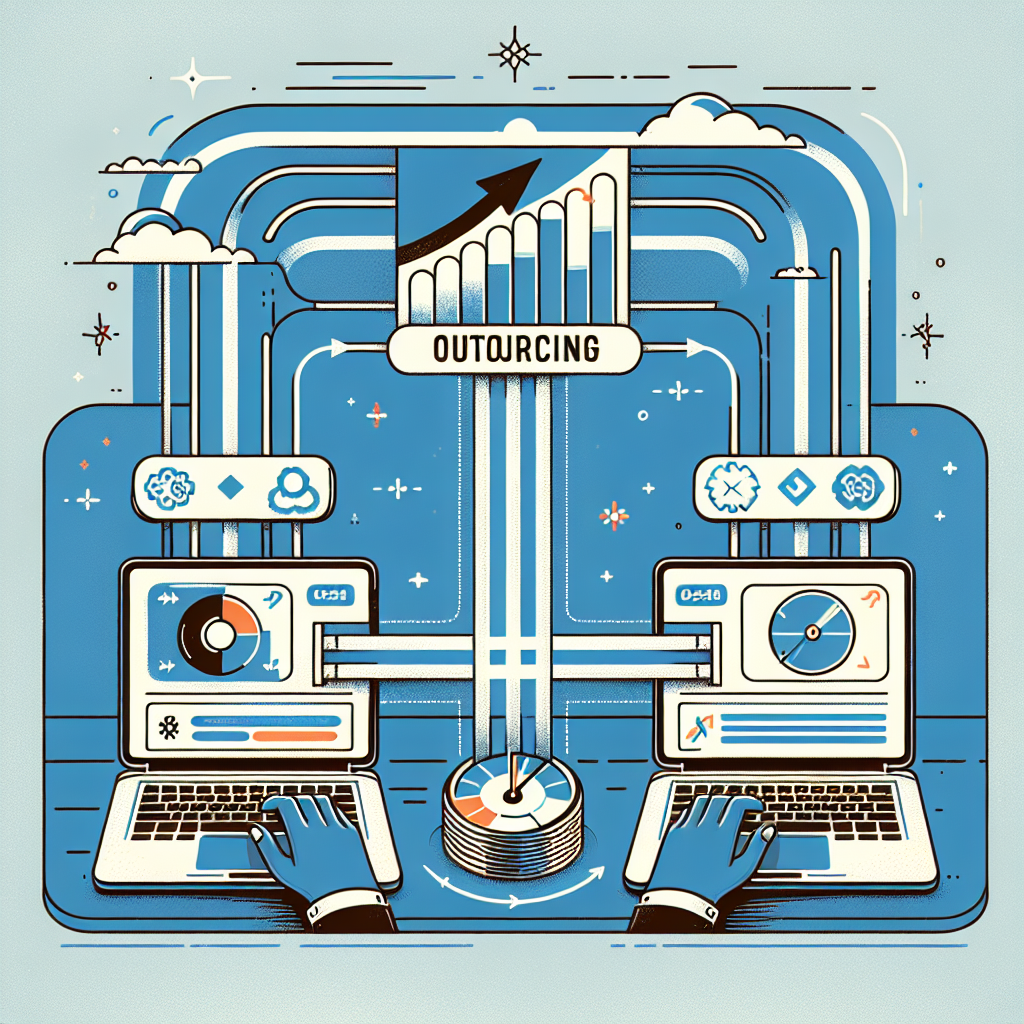Your cart is currently empty!
Tag: Productivity

Maximizing Productivity with Remote Monitoring Systems
In today’s fast-paced business world, maximizing productivity is crucial for staying competitive and achieving success. One way that businesses can enhance their productivity is by implementing remote monitoring systems. These systems allow companies to keep an eye on their operations and assets from anywhere in the world, providing real-time data and insights that can help streamline processes and improve efficiency.Remote monitoring systems utilize sensors and other technology to collect data on various aspects of a business’s operations, such as equipment performance, energy usage, and environmental conditions. This data is then transmitted to a central dashboard or platform where it can be analyzed and acted upon by decision-makers.
One of the key benefits of remote monitoring systems is the ability to proactively identify and address issues before they escalate into larger problems. For example, a manufacturing company using remote monitoring can receive alerts when a machine is operating outside of normal parameters, allowing them to take immediate action to prevent downtime and costly repairs. This proactive approach helps businesses avoid unexpected disruptions and maintain a high level of productivity.
Remote monitoring systems also enable businesses to make more informed decisions based on real-time data. By having access to up-to-date information on their operations, companies can optimize processes, allocate resources more effectively, and identify areas for improvement. This data-driven approach can lead to increased productivity and profitability in the long run.
Furthermore, remote monitoring systems can help businesses save time and resources by automating routine tasks and reducing the need for manual intervention. For example, a remote monitoring system for a fleet of vehicles can track their location, fuel consumption, and maintenance needs, allowing companies to optimize routes, schedule maintenance more efficiently, and reduce unnecessary expenses.
In conclusion, remote monitoring systems are a valuable tool for businesses looking to maximize productivity and stay ahead of the competition. By providing real-time data, proactive alerts, and automation capabilities, these systems empower companies to make smarter decisions, improve efficiency, and achieve their goals. Investing in a remote monitoring system can yield significant benefits for businesses of all sizes and industries, making it a worthwhile investment for those looking to boost their productivity and profitability.

How to Improve Help Desk Efficiency and Productivity
A help desk is a crucial component of any organization, as it serves as the first point of contact for customers seeking assistance with technical issues or product inquiries. To ensure that the help desk operates efficiently and effectively, it is important to implement strategies that can improve productivity and customer satisfaction. Here are some tips on how to improve help desk efficiency and productivity:1. Implement a ticketing system: A ticketing system is a software tool that helps organize and prioritize customer inquiries. By implementing a ticketing system, help desk agents can easily track and manage customer requests, ensuring that each inquiry is addressed in a timely manner.
2. Provide training and support: It is essential to provide ongoing training and support to help desk agents. This will ensure that they have the necessary skills and knowledge to effectively handle customer inquiries. Additionally, offering support and guidance can help agents feel more confident and motivated in their roles.
3. Automate repetitive tasks: To improve efficiency, consider automating repetitive tasks such as password resets or software updates. This will help save time and allow help desk agents to focus on more complex issues that require human intervention.
4. Set performance metrics: Establishing performance metrics such as average response time, resolution time, and customer satisfaction can help monitor and improve help desk efficiency. By setting goals and measuring performance, help desk managers can identify areas for improvement and implement strategies to enhance productivity.
5. Prioritize customer satisfaction: Ultimately, the goal of a help desk is to provide excellent customer service and support. It is important to prioritize customer satisfaction by actively listening to customer feedback, addressing issues promptly, and continuously seeking ways to improve the overall customer experience.
6. Encourage collaboration and knowledge sharing: Foster a culture of collaboration and knowledge sharing among help desk agents. Encourage team members to share best practices, tips, and solutions to common issues. This can help improve efficiency and productivity by leveraging the collective expertise of the team.
7. Invest in technology: Investing in the right technology tools can help streamline help desk operations and improve productivity. Consider implementing chatbots, remote support tools, or knowledge management systems to enhance efficiency and provide better support to customers.
By implementing these strategies, organizations can improve help desk efficiency and productivity, ultimately leading to higher customer satisfaction and a more positive overall experience for customers seeking assistance. Remember that continuous improvement is key, so regularly evaluate performance metrics and seek feedback from customers to identify areas for further enhancement.

Improving Efficiency and Productivity in Your Help Desk Operations
Having an efficient and productive help desk operation is essential for providing excellent customer service and resolving issues in a timely manner. By implementing strategies to improve efficiency and productivity, help desk teams can streamline their processes, increase customer satisfaction, and achieve better results. Here are some tips to help you enhance the productivity and efficiency of your help desk operations:1. Implement a ticketing system: A ticketing system allows help desk teams to track and prioritize customer requests, assign tasks to team members, and monitor progress on resolving issues. By using a ticketing system, help desk agents can easily access information about customer inquiries, streamline communication, and ensure that no requests slip through the cracks.
2. Provide comprehensive training: Proper training is crucial for help desk agents to effectively address customer issues and provide accurate information. Invest in training programs that cover technical knowledge, communication skills, and customer service best practices. By equipping your team with the necessary skills and knowledge, they will be able to handle customer inquiries more efficiently and effectively.
3. Utilize automation tools: Automation tools can help streamline repetitive tasks and free up time for help desk agents to focus on more complex issues. Use automation tools for tasks like ticket assignment, follow-up emails, and customer feedback surveys. By automating routine tasks, help desk teams can increase efficiency, reduce errors, and improve response times.
4. Establish clear processes and workflows: Clearly defined processes and workflows are essential for ensuring that help desk operations run smoothly. Create standardized procedures for handling customer inquiries, escalating issues, and resolving technical problems. By establishing clear processes, help desk agents can work more efficiently, reduce confusion, and provide consistent service to customers.
5. Monitor performance metrics: Tracking key performance metrics, such as response time, resolution time, and customer satisfaction, can help identify areas for improvement and measure the effectiveness of help desk operations. Regularly review performance metrics to identify trends, set goals for improvement, and make data-driven decisions to optimize efficiency and productivity.
6. Foster a positive work environment: A positive work environment is essential for maintaining high levels of productivity and employee satisfaction in the help desk. Encourage teamwork, provide recognition for achievements, and offer opportunities for professional development. By fostering a positive work environment, help desk agents will be motivated to perform at their best and deliver exceptional customer service.
By implementing these strategies, help desk teams can improve efficiency, productivity, and customer satisfaction in their operations. By utilizing tools, training, processes, and metrics, help desk operations can run smoothly, resolve issues quickly, and provide excellent support to customers. Investing in improving efficiency and productivity in your help desk operations will ultimately lead to happier customers and a more successful business.

Maximizing Efficiency and Productivity with Customized IT Solutions
In today’s fast-paced business environment, efficiency and productivity are key factors in determining the success of an organization. With the rapid advancements in technology, businesses are constantly looking for ways to streamline their operations and maximize their output. One effective way to achieve this is through the implementation of customized IT solutions that are tailored to meet the specific needs of a company.Customized IT solutions are designed to address the unique challenges and requirements of a business, providing a more efficient and effective way of managing operations. By understanding the specific goals and objectives of a company, IT professionals can develop solutions that are optimized to improve productivity and streamline processes.
One of the main benefits of customized IT solutions is the ability to automate repetitive tasks and streamline workflows. By implementing custom software applications and systems, businesses can reduce the amount of time spent on manual processes, allowing employees to focus on more strategic tasks. This not only increases productivity but also improves the overall efficiency of the organization.
Customized IT solutions also enable businesses to better manage their data and information. By implementing customized databases and information management systems, companies can ensure that their data is organized and easily accessible. This can help improve decision-making processes and allow for more accurate and timely reporting.
In addition, customized IT solutions can help businesses stay ahead of the competition by providing a competitive edge. By leveraging technology to improve operations and streamline processes, companies can increase their efficiency and productivity, ultimately leading to better results and increased profitability.
Overall, maximizing efficiency and productivity with customized IT solutions is essential for businesses looking to stay competitive in today’s fast-paced market. By leveraging technology to streamline processes, automate tasks, and improve data management, companies can achieve higher levels of productivity and success. Investing in customized IT solutions is a smart choice for businesses looking to optimize their operations and achieve their goals.

How IT Outsourcing Can Improve Your Company’s Efficiency and Productivity
In today’s fast-paced business world, companies are constantly looking for ways to improve efficiency and productivity. One highly effective strategy that many businesses are turning to is IT outsourcing. By outsourcing IT services, companies can focus on their core operations while leaving technical tasks to experts. This can result in significant improvements in efficiency and productivity.One of the key ways that IT outsourcing can improve a company’s efficiency is by allowing employees to focus on their core responsibilities. IT tasks can be time-consuming and require specialized knowledge. By outsourcing these tasks to a third-party provider, employees can dedicate more time to their main duties, leading to increased productivity and better results.
Additionally, IT outsourcing can provide access to a team of experts with a wide range of skills and experience. This can be particularly beneficial for smaller companies that may not have the resources to hire a full-time IT staff. By outsourcing IT services, companies can access a team of professionals who can provide expertise in areas such as cybersecurity, software development, and network management.
Another way that IT outsourcing can improve efficiency is by reducing downtime and improving system reliability. IT outsourcing providers typically offer 24/7 support, ensuring that any technical issues are resolved quickly and effectively. This can help minimize disruptions to business operations and improve overall productivity.
Furthermore, IT outsourcing can also help companies stay up-to-date with the latest technology trends. Outsourcing providers are constantly investing in new technologies and tools, ensuring that their clients have access to the most advanced solutions. This can give companies a competitive edge and help them stay ahead of the curve in their industry.
Overall, IT outsourcing can be a valuable strategy for companies looking to improve efficiency and productivity. By allowing employees to focus on their core responsibilities, accessing a team of experts, reducing downtime, and staying up-to-date with technology trends, companies can achieve significant benefits from outsourcing their IT services. If you are looking to streamline your business operations and boost productivity, consider outsourcing your IT needs today.

How Managed Services Can Improve IT Efficiency and Productivity
In today’s fast-paced business environment, efficiency and productivity are key factors in ensuring success. One of the ways businesses can achieve this is by using managed services to streamline their IT operations.Managed services refer to the practice of outsourcing the management of certain IT functions to a third-party provider. This can include services such as network monitoring, data backup and recovery, security management, and helpdesk support.
By partnering with a managed services provider, businesses can benefit from a range of advantages that can help improve their IT efficiency and productivity. Here are some ways managed services can help:
1. Proactive monitoring and maintenance: Managed services providers have the tools and expertise to monitor a company’s IT infrastructure round-the-clock. This proactive approach allows them to identify and address potential issues before they escalate into major problems. By keeping systems up-to-date and running smoothly, businesses can avoid costly downtime and disruptions to their operations.
2. Enhanced security: Cybersecurity threats are a major concern for businesses of all sizes. Managed services providers can help strengthen a company’s security posture by implementing robust security measures and protocols. This can include firewall management, antivirus software updates, and regular security audits to identify and address vulnerabilities.
3. Access to skilled IT professionals: By outsourcing IT management to a managed services provider, businesses can tap into a team of skilled professionals with expertise in various areas of IT. This can be particularly beneficial for small and medium-sized businesses that may not have the resources to hire an in-house IT team. With access to a team of experts, businesses can ensure that their IT systems are well-maintained and secure.
4. Scalability and flexibility: Managed services can be tailored to meet the specific needs of businesses, allowing them to scale their IT services up or down as needed. This flexibility is particularly valuable for businesses that experience fluctuating demand or are looking to expand their operations. Managed services providers can quickly adapt to changes in a company’s IT requirements, ensuring that they have the support they need to grow and succeed.
5. Cost savings: Outsourcing IT management to a managed services provider can help businesses save money in the long run. By paying a fixed monthly fee for services, businesses can avoid the costs associated with hiring and training an in-house IT team. Additionally, managed services providers can help businesses avoid costly downtime and security breaches, which can result in significant financial losses.
Overall, managed services can play a crucial role in improving IT efficiency and productivity for businesses. By partnering with a trusted provider, businesses can benefit from proactive monitoring, enhanced security, access to skilled IT professionals, scalability and flexibility, and cost savings. With these advantages, businesses can focus on their core operations and drive growth and success in today’s competitive marketplace.

Remote Monitoring: Enhancing Productivity and Performance
Remote monitoring is a technology that allows businesses to keep track of their operations and assets from a distance. By using sensors and monitoring systems, companies can obtain real-time data on various aspects of their operations, such as equipment performance, energy usage, and environmental conditions. This technology is becoming increasingly popular among businesses looking to enhance productivity and performance.One of the key benefits of remote monitoring is its ability to provide businesses with immediate feedback on their operations. This allows companies to quickly identify any issues or inefficiencies and address them before they escalate into larger problems. For example, if a piece of equipment is not functioning properly, remote monitoring can alert the maintenance team so they can take action immediately. This proactive approach can help businesses avoid costly downtime and disruptions to their operations.
In addition to improving operational efficiency, remote monitoring can also help businesses save on costs. By tracking energy usage and environmental conditions, companies can identify areas where they can reduce waste and optimize their resources. For example, if a building is using more energy than necessary, remote monitoring can pinpoint the source of the problem and help businesses make adjustments to save on utility bills. Similarly, monitoring equipment performance can help businesses identify opportunities for maintenance or upgrades that can extend the lifespan of their assets and prevent costly repairs.
Furthermore, remote monitoring can also enhance the safety and security of businesses. By monitoring environmental conditions, such as temperature and humidity, companies can ensure that their assets are protected from damage or theft. Additionally, remote monitoring can help businesses track the location and condition of their assets, reducing the risk of loss or theft.
Overall, remote monitoring is a powerful tool that can help businesses enhance their productivity and performance. By providing real-time data on their operations, companies can make informed decisions that can improve efficiency, reduce costs, and enhance safety. As technology continues to advance, remote monitoring will likely become an essential tool for businesses looking to stay competitive in today’s fast-paced and ever-changing business environment.

Innovative IT Solutions for Improving Productivity and Collaboration
In today’s fast-paced and interconnected business world, productivity and collaboration are key to staying ahead of the competition. Companies are constantly looking for ways to improve efficiency and streamline their operations. One way to achieve this is through the implementation of innovative IT solutions.There are a variety of IT solutions available that can help improve productivity and collaboration within an organization. From project management tools to communication platforms, these solutions can help teams work more efficiently and effectively together.
One popular IT solution for improving productivity is project management software. These tools allow teams to track tasks, set deadlines, and collaborate on projects in real-time. By providing a centralized hub for all project-related information, team members can stay organized and on track, leading to increased productivity.
Another key IT solution for improving collaboration is communication platforms. These tools, such as Slack or Microsoft Teams, allow team members to communicate easily and efficiently, regardless of their location. With features like chat, file sharing, and video conferencing, teams can collaborate in real-time and stay connected throughout the day.
Cloud computing is another innovative IT solution that can help improve productivity and collaboration. By storing data and applications in the cloud, team members can access information from anywhere, at any time. This flexibility allows for seamless collaboration and increased productivity, as team members can work on projects together, even if they are not in the same physical location.
Overall, investing in innovative IT solutions can have a significant impact on a company’s productivity and collaboration efforts. By providing tools that streamline processes, improve communication, and increase accessibility to information, companies can stay ahead of the curve and achieve their business goals more efficiently. It is essential for organizations to continually evaluate and implement new technologies to ensure they are leveraging the latest IT solutions to drive productivity and collaboration within their teams.

The Benefits of Remote Monitoring: How It Can Improve Efficiency and Productivity
Remote monitoring is a technology that allows businesses to monitor their systems and processes from a distance. This can include monitoring machinery, equipment, and even employees. By utilizing remote monitoring, businesses can improve efficiency and productivity in a number of ways.One of the key benefits of remote monitoring is the ability to access real-time data from anywhere in the world. This means that managers and employees can keep an eye on operations even when they are not physically present at the workplace. This can help to identify issues and address them quickly, preventing costly downtime and delays.
Remote monitoring also allows businesses to track performance metrics and key performance indicators (KPIs) in real-time. This can help to identify trends and patterns, allowing businesses to make data-driven decisions to improve efficiency and productivity. By having access to this data, businesses can optimize their processes and make adjustments as needed to achieve better results.
Another benefit of remote monitoring is the ability to automate certain tasks. For example, businesses can set up alerts and notifications to be sent when certain thresholds are reached or when issues arise. This can help to streamline operations and improve response times, leading to increased efficiency and productivity.
Remote monitoring can also help businesses to reduce costs. By monitoring systems and processes remotely, businesses can identify areas where resources are being underutilized or wasted. This can help to optimize operations and reduce unnecessary expenses, leading to cost savings and improved profitability.
Overall, remote monitoring is a powerful tool that can help businesses improve efficiency and productivity. By accessing real-time data, tracking performance metrics, automating tasks, and reducing costs, businesses can streamline operations and achieve better results. Whether you are a small business or a large corporation, remote monitoring can help you stay competitive in today’s fast-paced business environment.

Maximizing Productivity with Customized IT Solutions
In today’s fast-paced business environment, maximizing productivity is crucial for staying competitive and ensuring success. One way to achieve this is by implementing customized IT solutions that are tailored to meet the specific needs of your organization.Customized IT solutions can help streamline processes, automate tasks, and improve communication within your company. By identifying the unique challenges and requirements of your business, you can work with IT professionals to develop a solution that addresses these issues and helps you achieve your goals more efficiently.
One of the key benefits of customized IT solutions is that they can be designed to integrate seamlessly with your existing systems and workflows. This means that you can leverage the technology you already have in place while adding new functionalities that enhance your productivity. Whether you need a custom software application, a cloud-based solution, or a mobile app, IT professionals can work with you to create a solution that meets your specific needs.
Another advantage of customized IT solutions is that they can be scaled to grow with your business. As your company expands and evolves, your IT infrastructure needs may change. With a customized solution, you can easily add new features and capabilities to support your growth without having to overhaul your entire system.
Customized IT solutions can also help you improve collaboration and communication among your team members. By implementing tools such as project management software, collaboration platforms, and communication tools, you can ensure that your employees can work together more effectively and efficiently. This can lead to better decision-making, faster problem-solving, and increased productivity across your organization.
In addition, customized IT solutions can help you enhance security and compliance within your organization. By implementing robust cybersecurity measures and compliance tools, you can protect your sensitive data and ensure that you are meeting regulatory requirements. This can give you peace of mind knowing that your business is secure and that your data is protected.
Overall, maximizing productivity with customized IT solutions can help your business operate more efficiently, reduce costs, and achieve better results. By working with IT professionals to design and implement a solution that meets your specific needs, you can unlock the full potential of your organization and drive success in today’s competitive business landscape.
